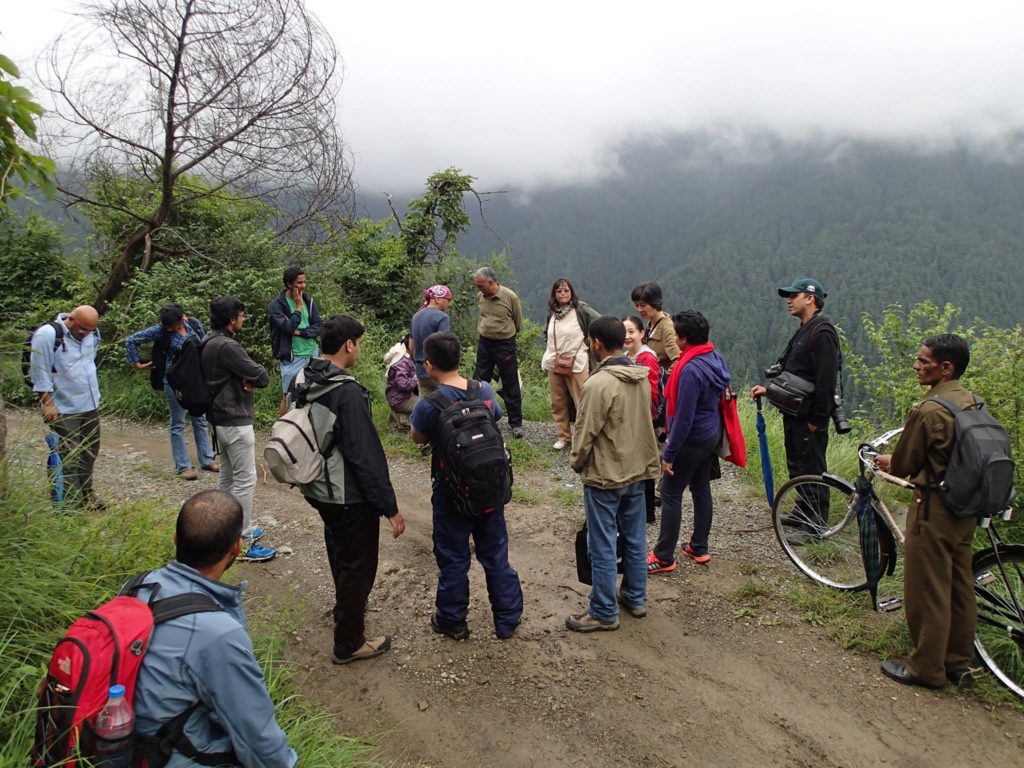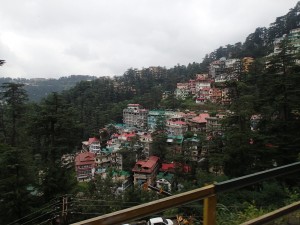
For almost a week this summer, the India China Institute hosted a series of meetings, discussions and talks with a group of artists from India, China, Nepal and the US in the old hill station town of Shimla, located in the Indian Himalayas of Himachal Pradesh. Coming from a wide range of backgrounds, the group was tasked with a seemingly simply–but in reality extremely complex challenge–how to think about the role of artists and creative practitioners in discussions and debates about climate change, that amorphous and seemingly all-encompassing term currently in vogue.
A year earlier, in the fall of 2014, the India China Institute had hosted a day-long workshop and meeting with a group of artists and creative thinkers in Kathmandu, Nepal to think about a similar question. You can read more about that meeting here. That meeting, and the one held earlier this summer, are all helping ICI to lay the groundwork for what may become a new initiative in the future. Climate Change Himalaya: Engaging the Arts and Humanities, as we have tentatively dubbed this emerging initiative, hopes to move beyond the historical emphasis on natural sciences, and then later social sciences, as the central lens for thinking about climate change-related issues. ICI wanted to better understand how artists, filmmakers, writers, performance artists, sculptors, dancers and other artists were making sense of these complex issues, and in particular, how this is taking place within and across the Himalayas.

With the old British hill station town of Shimla as our backdrop, this group of artists from four countries shared some of their own work and discussed how they were already engaging with local issues and challenges in their work: the invisibility of the Yamuna River in urban Delhi, the loss of nature awareness (birds in particular) among Indian youth, issues of genetic ownership and bio-piracy in modern agriculture, and the relationship of non-human suffering and meat consumption to resource use and environmental pollution.
In between long sessions thinking about how artists engage with these issues, the group had the change to learn more about the history of the area (both colonial and ecological), as well as spend some time exploring the town, including several wonderful guided interpretive tours with local Shimla friends.
While no simple answers were reached by the group in relation to how artists can best engage with climate issues, everyone agreed these are important issues that each person will continue to grapple with in their own practices, from the studio to the gallery, and from the classroom to the streets. Sometimes the most important part of the discussion is initiating the process of deliberation, and being open to where it may take us. As this initiative continues to develop, ICI hopes to continue to engage a wide range of artists, both here in New York and with our partners in India, China and Nepal.
You can learn more about this emerging initiative right here. Stay tuned for more updates as this exciting project develops. If you are an artist interested in these issues, feel free to drop us an e-mail here.
